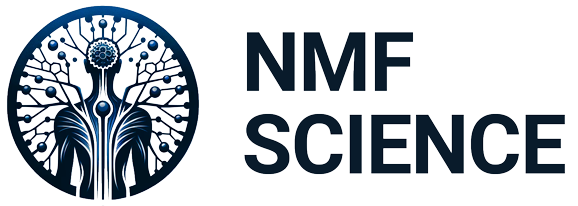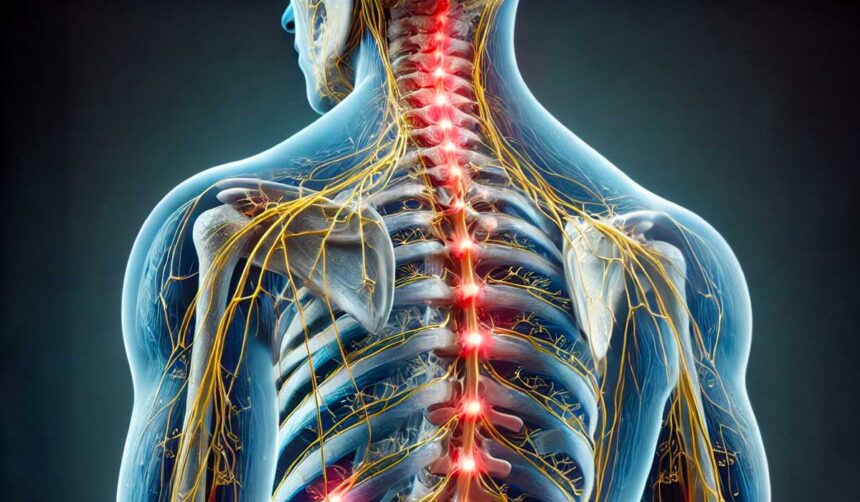Navigating the complexities of neuromyofascial pain requires a deep understanding of the spine’s role in health and disease. As a pioneer in the field, I’ve dedicated my career to unraveling the nuanced ways in which spinal injuries contribute to a wide array of pain syndromes. This journey into the heart of neuromyofascial science reveals how specific areas of the spine are intricately linked to the symptoms patients experience, from the head and face to the limbs and torso. Here, I share a distilled essence of my findings, aiming to illuminate the path for fellow practitioners and patients alike toward a more nuanced understanding and treatment of neuromyofascial pain.
Starting from the top of the spine, I split the neck into upper neck and lower neck.
The upper neck and craniocervical junction or CCJ, when injured, will often refer pain to the head and face causing migraine type headaches and jaw and facial pain. Balance problems or vertigo may occur as well as ringing or tinnitus. Visual acuity or the ability to focus the eyes is commonly affected, as well as light sensitivity and sound sensitivity.
The lower neck injuries are more often contributing to classic tension headache which feels like a band around the front and sides of the head, while the upper limbs can develop forms of numbness and tingling and weakness from a number of spinal muscle injuries.
Carpal tunnel syndrome, ulnar neuritis which cause different patterns of numbness are common, but global arm numbness commonly occurs as well, and indicates a form of what I call “myofascial thoracic outlet syndrome” where the muscle of the neck and shoulder are tethering groups of nerves running from the neck to the arm. Tennis elbow, golfers elbow, hand and thumb pain and weakness are also common.
The thoracic spine or upper back is often injured in car accidents but is typically not considered and not investigated well as it can be very difficult to measure injuries and the effects in this area on the spine. However, the thoracic spine is very important in complex whiplash injuries as it is very prone to accelerated bending or kyphosis, and types of retrolisthesis or slipped vertebrae. These changes can contribute to chest pain, rib pain, gastrointestinal symptoms, painful breathing and greatly aggravate the neck from spinal cord tethering.
I have developed advanced diagnostics and treatment for thoracic spine, and the rest of the spine and will discuss the thoracic spine injuries in a separate discussion due to its largess and complexity. A key point is that the thoracic spine is often a major contributor to complex injury cases, even when there is not obvious pain in the upper back area. Spinal cord tethering in the thoracic spine is a common feature in complex pain cases and is typically not be seen on any MRI.
I often split the Lower spine or lumbar spine into 3 areas; the L4-S4 area, the L1-L4 area and The T10-L1 area which means I include the lower thoracic spine in the lower back assessment. This is because the lower thoracic joins the lumbar spine at the thoraco-lumbar junction which has a very specific pattern of injury.
The lower lumbar spine may refer pain, numbness, tingling or weakness in the back of the legs and parts of the feet, and parts of hip. The sacral areas may affect back of legs, calves and feet and are usually dismissed as there are no disks, but the spinal fascia can strangle the nerve roots in these areas causing complex leg and foot pain. The L1-L4 areas can affect the front and side and inner thigh muscles such as the quadriceps, adductors and even hamstring. T10-L1 or the TL junction commonly fails after whiplash and can cause hip spine syndrome, hip joint pain and arthritis, constipation, bladder and prostate problems and difficulty straightening. The TL junction causes the iliopsoas to spasm and can twist the lumbar spine causing what chiropractors call a shorter leg, or twisted pelvis.
What I have described is a general patterning of how spinal neuromyofascial pain can refer pain and is by no means complete and does not consider interactive injuries of neck, mid back, and lower back.
Nor does it consider advanced injuries affecting parts of the spine or how the thoracic spine can change the foundation of how the neck or low back articulate to the spine. I label the thoracic spine the foundation of both the cervical and lumbar spine, as the neck and lumbar spine literally emerge from the thoracic spine.
Reflecting on the complexities of neuromyofascial pain and the spinal origins of such diverse symptoms underscores the necessity of adopting an integrative understanding of the body’s interconnected systems. Through neuromyofascial science, our approach extends beyond merely addressing symptoms to unraveling the underlying dysfunctions contributing to pain. As our knowledge deepens and our treatment methodologies evolve, we edge closer to a reality where managing neuromyofascial pain becomes not just feasible but efficient. My commitment to this vision is unwavering, fueled by the belief in each patient’s potential for recovery and the transformative impact of tailored, patient-centric care.
Medical Disclaimer:
The information provided in this article is for educational and informational purposes only and is not intended as a substitute for professional medical advice, diagnosis, or treatment. Always seek the advice of your physician or another qualified health provider with any questions you may have regarding a medical condition or treatment and before undertaking a new health care regimen, regardless of your location. Never disregard professional medical advice or delay in seeking it because of something you have read on this website.
AI Disclaimer:
The images and abstracts featured in our blog posts are generated using artificial intelligence. While we strive for accuracy and relevance, there may be occasional discrepancies or errors. We appreciate your understanding and encourage readers to consider the context and intent behind these AI-generated elements.




